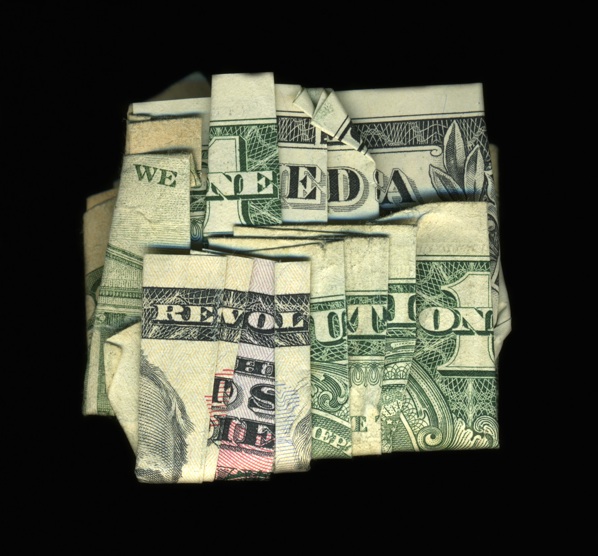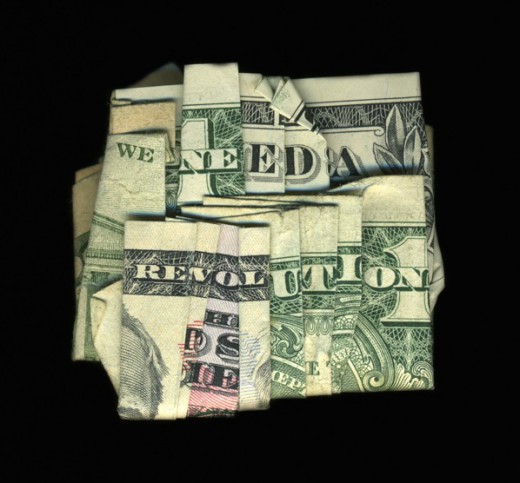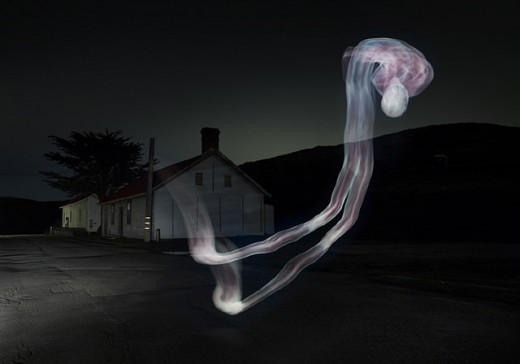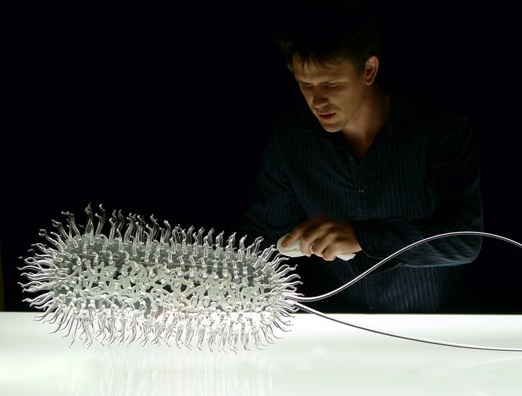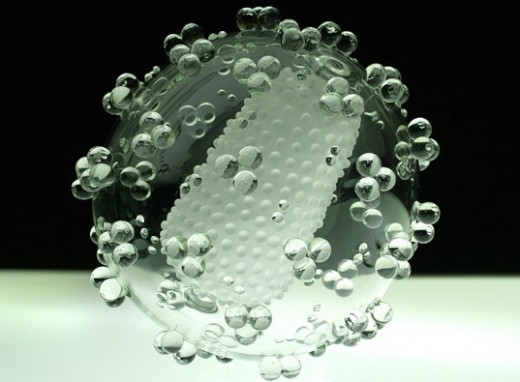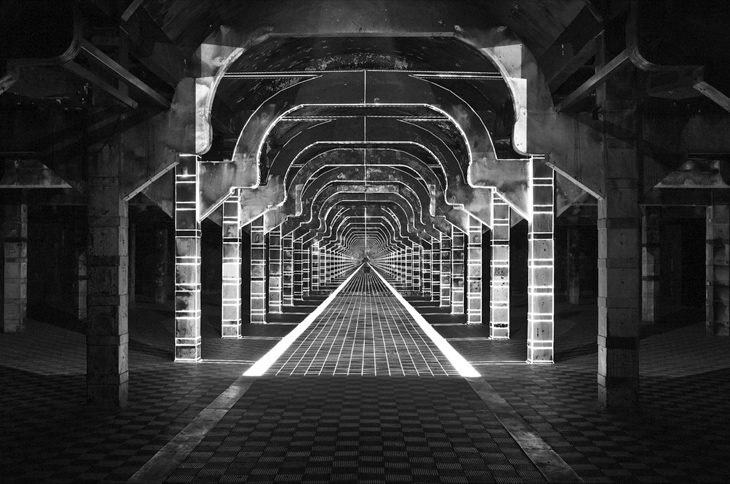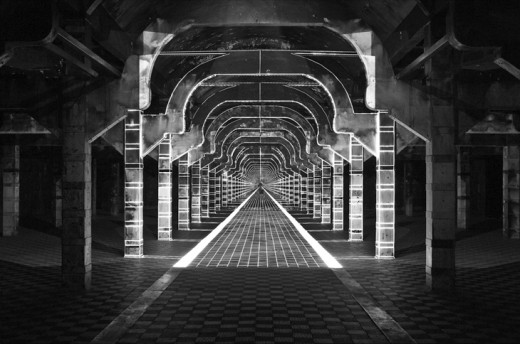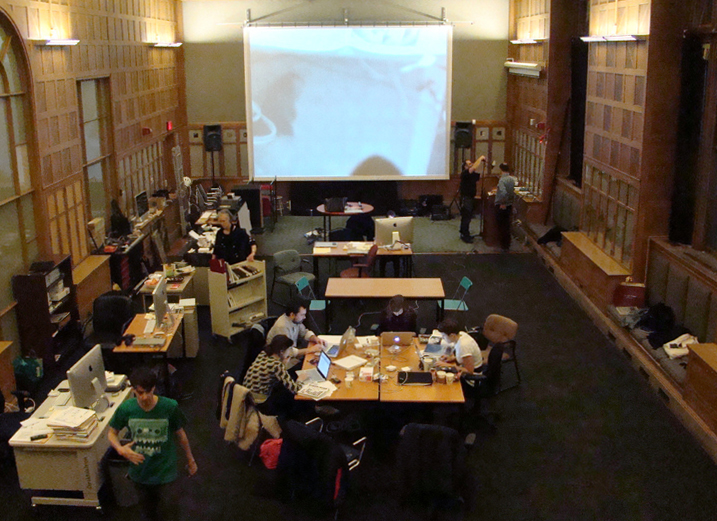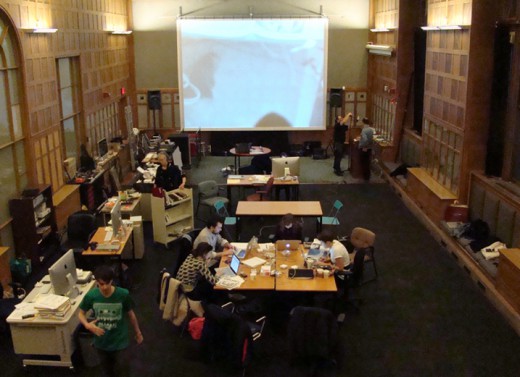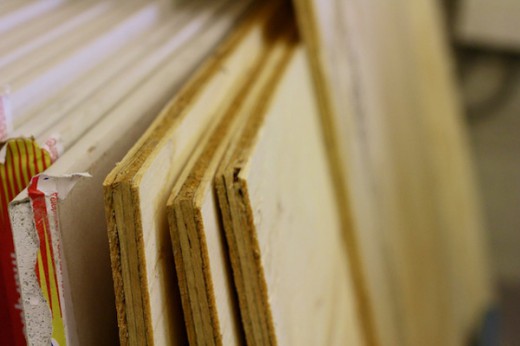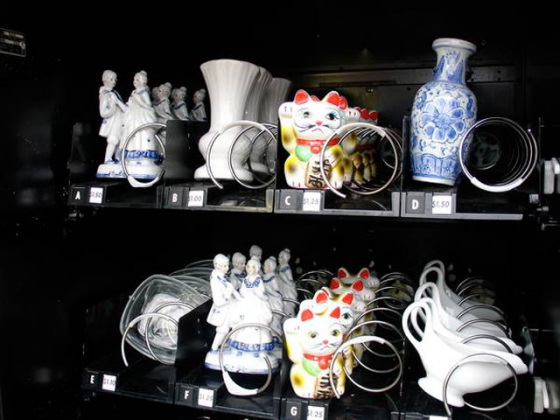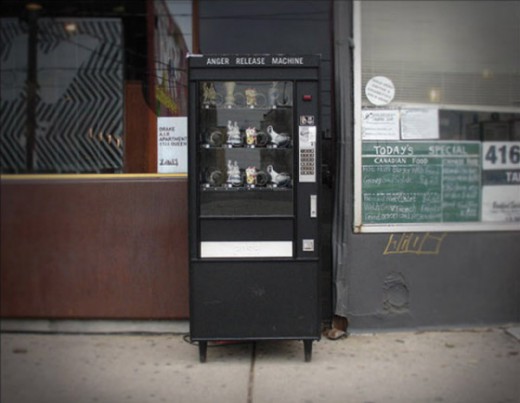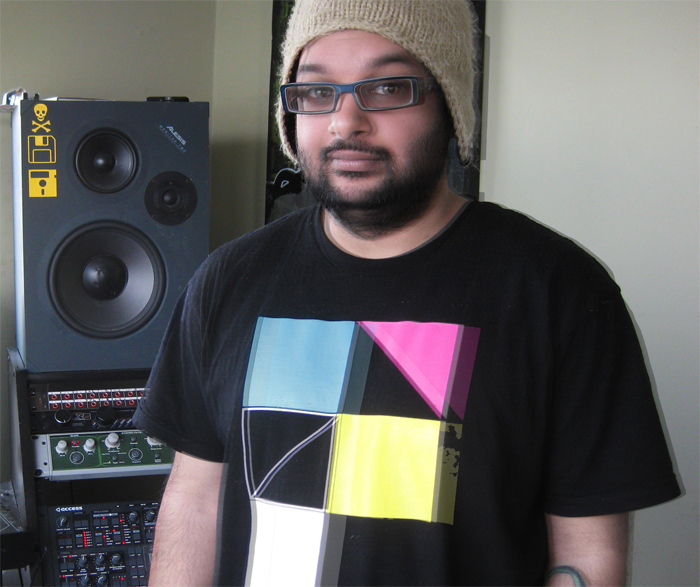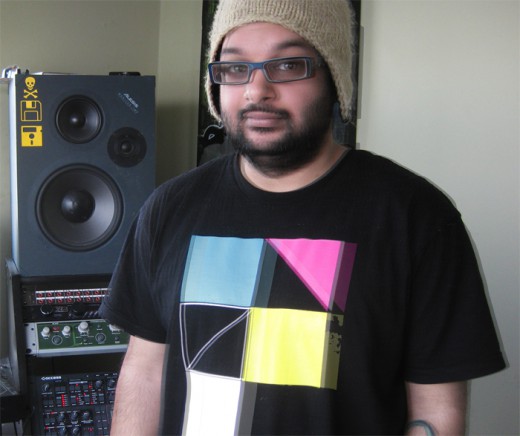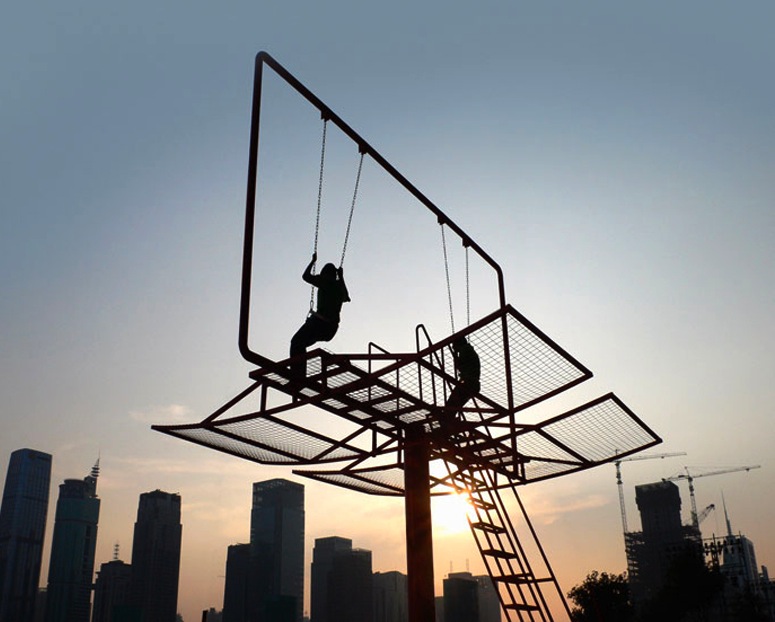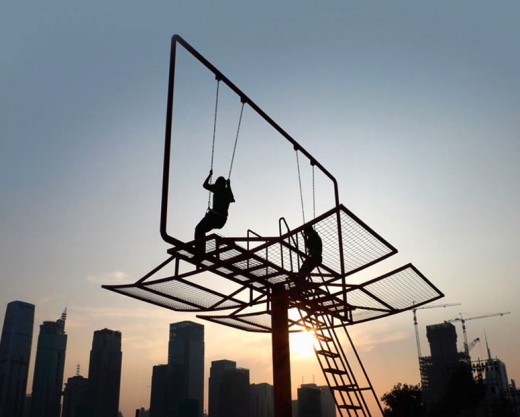Dan Tague‘s recent body of work reminds me of a brief period in my undergrad when I had an interest in the power and aesthetics of currency. While I tried to duplicate the look of Canadian bills with paint, Dan uses American bills to spell out phrases such as “Reality Sucks” or “Don’t Tread on Me”. Dan’s project statement suggests that “The cost of war has created an internal war on our economy, where the generals are CEOs and the tanks are toxic assets. […] It is not coincidence that our money mimics military camouflage as illustrated in this new body of work.”
Gagnon & Schott’s 12:31
Since the film-trailer-like synopsis of Croix Gagnon and Frank Schott’s project 12:31 is so epic, I think I’ll start by including it verbatim.
“In 1993, a convicted murderer was executed. His body was given to science, segmented, and photographed for medical research. In 2011, we used photography to put it back together.”
After the page break I’ve included a description of the process involved in making this happen.
Via: Today and Tomorrow
Glass Microbiology by Luke Jerram
Anyone who has taken a look through a modern scientific textbook probably noticed how vividly coloured most of the diagrams are. While scientific illustrations can be extremely helpful in understanding the inner workings of things like pathogens and plant/animal cells, they can also be a little misleading. Luke Jerram has highlighted this notion with a sculptural series called Glass Microbiology.
“These transparent glass sculptures were created to contemplate the global impact of each disease and to consider how the artificial colouring of scientific imagery affects our understanding of phenomena. Jerram is exploring the tension between the artworks’ beauty, what they represent and their impact on humanity.”
Pablo Valbuena’s Quadratura
Quadratura is a new site-specific light installation by Spanish artist Pablo Valbuena. He projected a perspective grid between two rows of columns and onto the wall behind them, thus creating the illusion of an infinite pathway. Pablo reminds us that “Quadratura was the technique used in the baroque to extended architecture through trompe l’oeil and perspective constructions generated with paint or sculpture.” I suggest watching the short video of the installation setup included on his project page as it highlights the degree to which light transforms this space.
Book Sprinting
The act of authoring a book has traditionally been a long and arduous task consisting of many revisions and often years of work. Book Sprinting, on the other hand, is a sort of reaction to the traditional method of book production. In this case, a small group of writers collaboratively co-author, edit, and revise a book in a week or so. The end result is a finished publication that probably has a cohesiveness not present in some books.
I wonder if attempting a one-off publication project like this would be a good idea for us (Broken City Lab). We usually have a half-dozen research fellows around the table at most meetings. I bet we could pull off a nice mini-publication over a weekend.
Via: We Make Money, Not Art (Image from another similar Book Sprinting event.)
Pa++ern: Language for Embroidery
Pa++ern is a project by Daito Manabe and Motoi Ishibashi. Basically, they found a way to convert Twitter messages into a design code that an embroidery machine can sew into fabric. The designs are a bit random, but the idea is pretty novel.
Via: Today and Tomorrow
Building a Wooden Test-Letter
Back in 2010 we conceptualized numerous iterations of Kitchener-Waterloo border installations for Contemporary Art Forum Kitchener + Area (CAFKA). We decided on an ambitious wooden installation which will sit in a shallow pond at the city hall nearby. Our text installation, which will read REFLECT ON HERE, will need some thorough planning. For this reason, we spent most of yesterday evening constructing the faces of a test-letter (R) from plywood sheets measuring 8’x4′ each.
Anger Release Machine
Here is a new alternative to internalizing your anger! This vending machine, created by Yarisal & Kublitz, is a mechanism of anger therapy. After inserting a coin, you can choose which piece of china you would like to drop to the bottom of the machine and shatter. This, in theory, will make you feel better.
Via: Today and Tomorrow
Border Interviews: Kero
To get a jump start on laying the groundwork for our upcoming How to Forget the Border Completely project, we have decided to interview a small group of individuals who may be considered “experts” of the Windsor-Detroit border in some way.
Kero, a musician/graphic designer/video artist, was our first candidate for a video interview. He has had the frustrating experience of having to cross the border into Detroit quite frequently, many times spending up to an hour being screened upon entry.
Kero shared some border crossing stories–some of which truly highlight the absurdity of current border protocol–and shared ideas for how to improve the border-crossing experience, if even slightly.
Double Happiness
Here is a magnificent use of billboard space created by architect Didier Faustino. He has titled the work/installation/swing-set Double Happiness for pretty obvious reasons. Clever ideas like this usually don’t come from passivity towards the city, but an engaged, analytical, and curious attitude. I found this summary of the conceptual framework behind the project:
“Double Happiness responds to the society of materialism where individual desires seem to be prevailing over all. This nomad piece of urban furniture allows the reactivation of different public spaces and enables inhabitants to reappropriate fragments of their city. They will both escape and dominate public space through a game of equilibrium and desequilibrium. By playing this “risky” game, and testing their own limits, two persons can experience together a new perception of space and recover an awareness of the physical world.”
